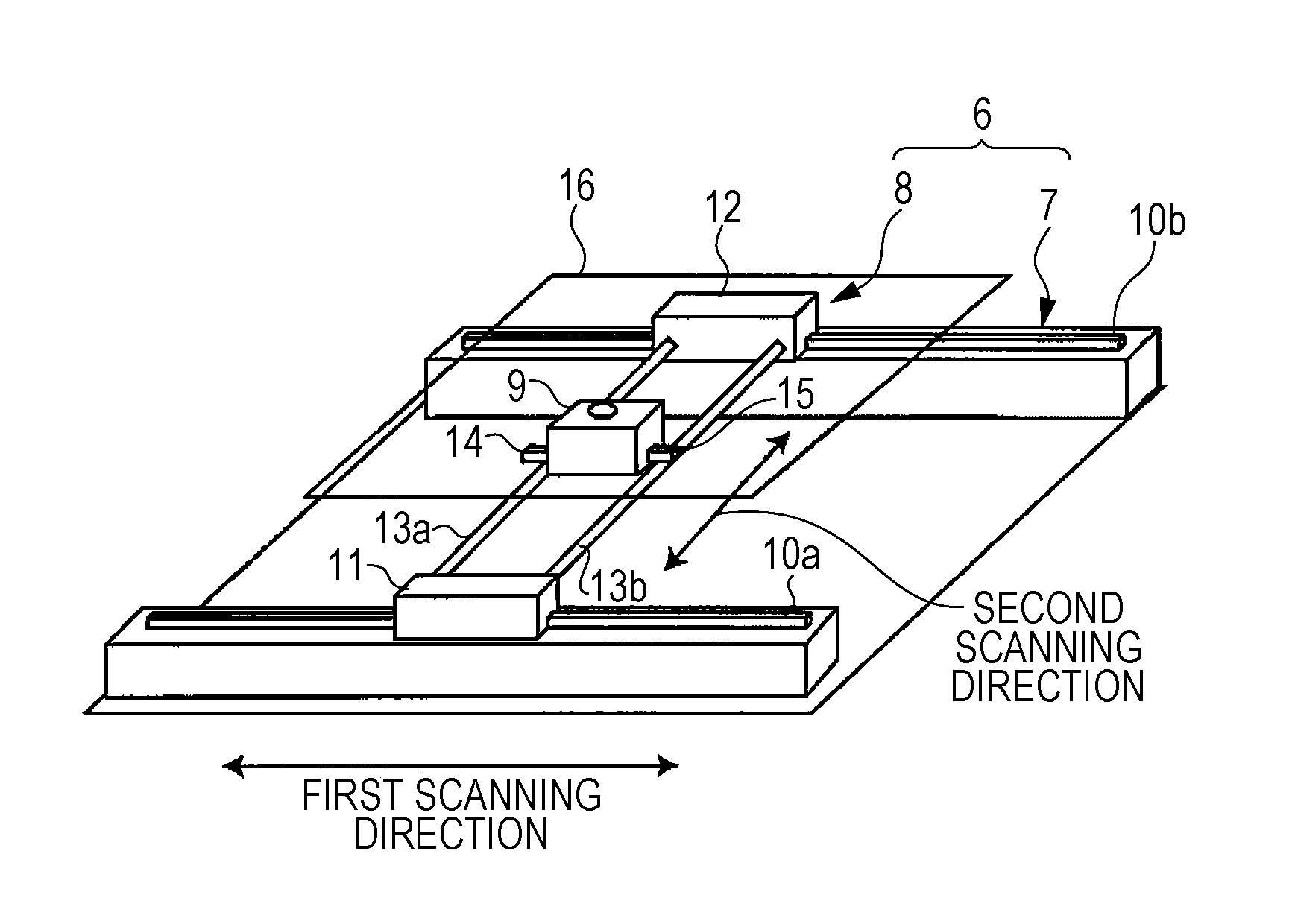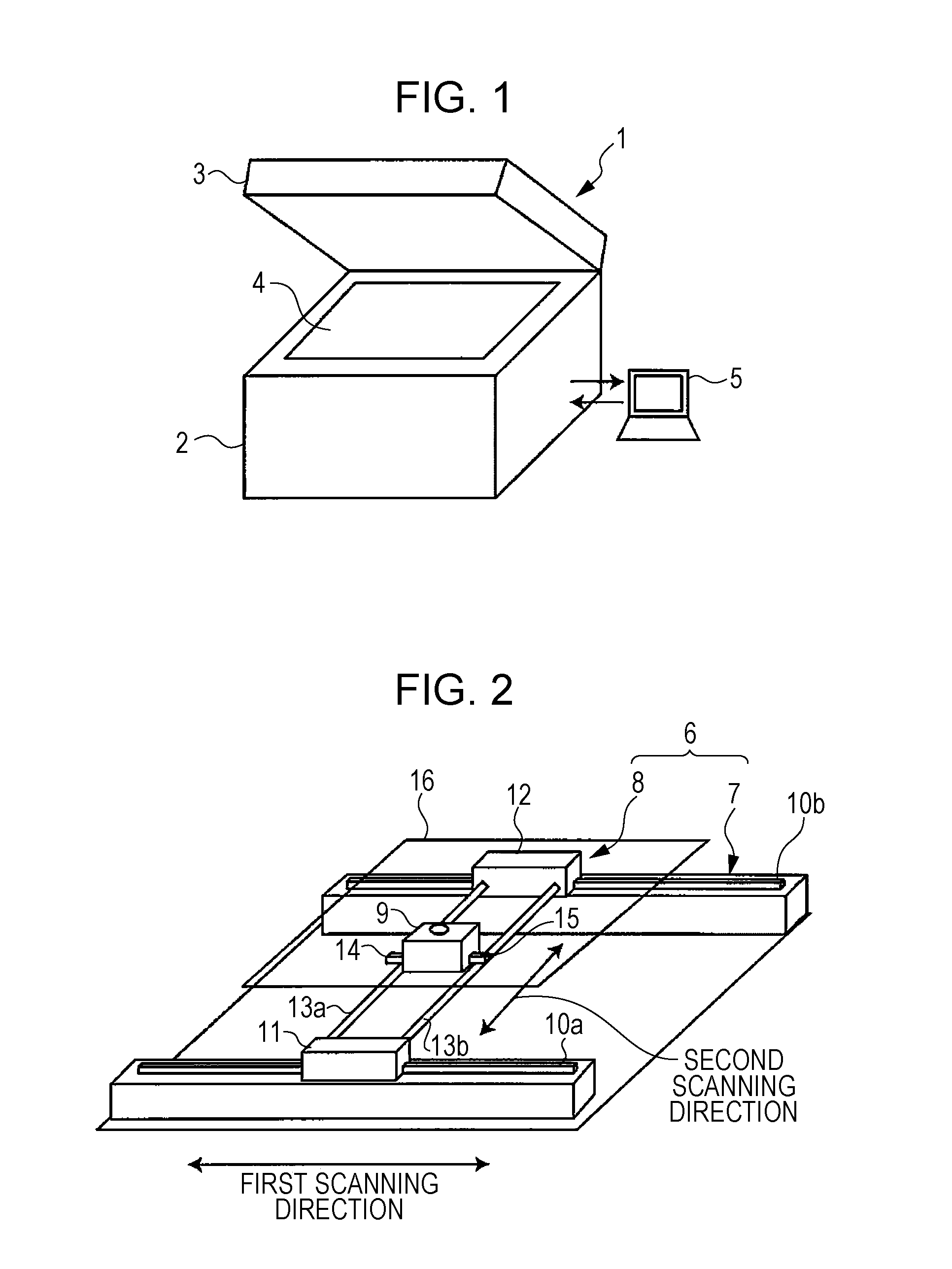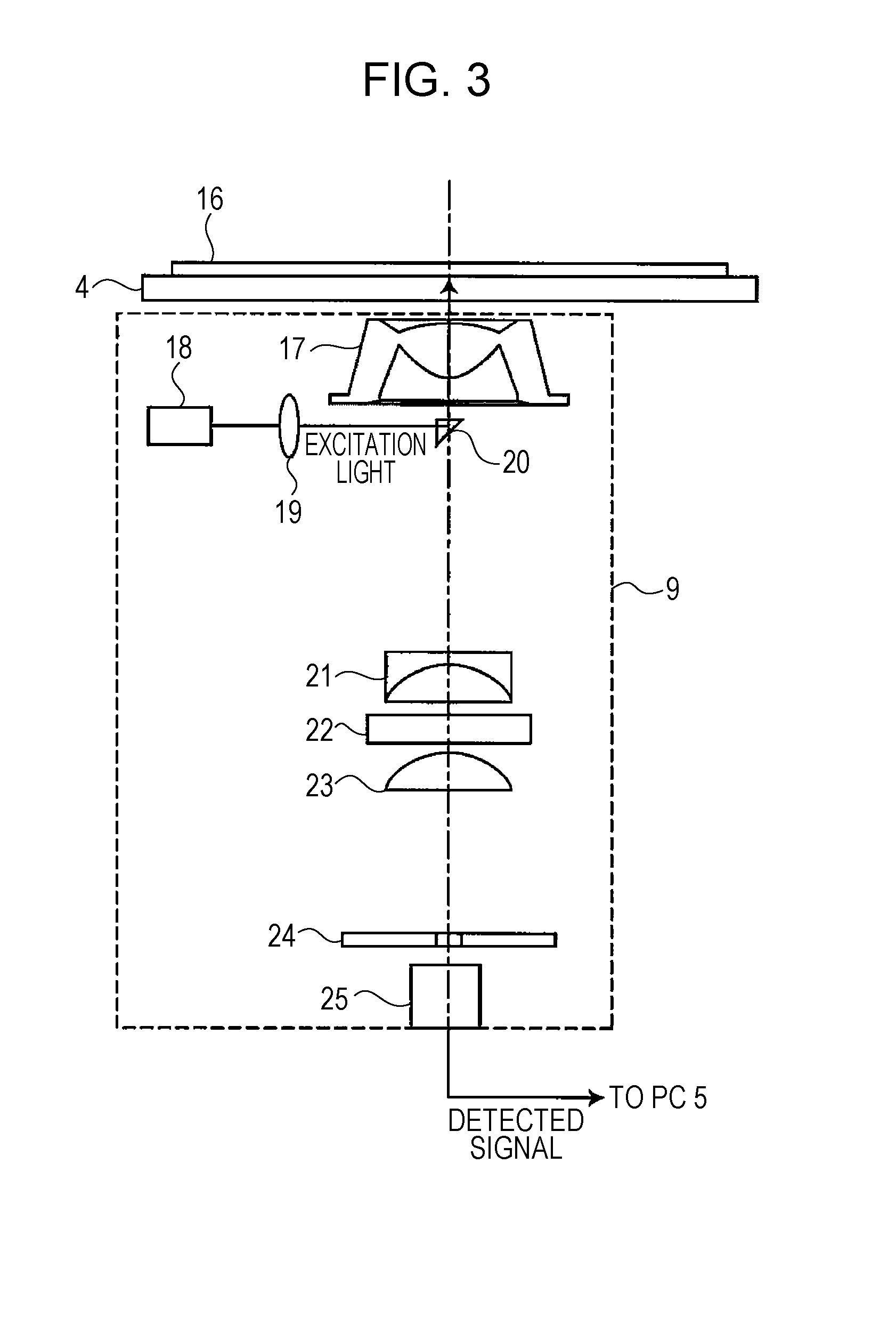Fluorescence information reading device and fluorescence information reading method
a fluorescence information and reading device technology, applied in fluorescence/phosphorescence, optical radiation measurement, spectrophotometry/monochromators, etc., can solve the problems of increasing the size of the lens element, complicating the moving mechanism of the concave mirror. , to achieve the effect of reducing the diameter of the objective lens element, enhancing the light collection efficiency, and increasing the sensitivity of the photodetection elemen
- Summary
- Abstract
- Description
- Claims
- Application Information
AI Technical Summary
Benefits of technology
Problems solved by technology
Method used
Image
Examples
Embodiment Construction
[0062]The present invention will be described in detail below in conjunction with an illustrated embodiment.
[0063]FIG. 1 is an outside view of a fluorescence information reading device according to an embodiment. A fluorescence information reading device 1 is roughly composed of a body 2 that forms a housing, and a cover 3 that covers an upper surface of the body 2. A sample table 4 made of glass is provided on the upper surface of the body 2. For example, a gel support or a transfer support, such as a membrane, in which biogenic substances labeled by a fluorescent substance (both of the supports are not illustrated) is set as a sample on the sample table 4.
[0064]Optical systems are disposed on a lower side of the sample table 4. Excitation light is applied to the sample set on the sample table 4 from below through the sample table 4 by an irradiation optical system, and fluorescence from the sample, which passes through the sample table 4, is detected by a detection optical system....
PUM
| Property | Measurement | Unit |
|---|---|---|
| fluorescence | aaaaa | aaaaa |
| wavelength | aaaaa | aaaaa |
| fluorescence detection | aaaaa | aaaaa |
Abstract
Description
Claims
Application Information
 Login to View More
Login to View More - R&D
- Intellectual Property
- Life Sciences
- Materials
- Tech Scout
- Unparalleled Data Quality
- Higher Quality Content
- 60% Fewer Hallucinations
Browse by: Latest US Patents, China's latest patents, Technical Efficacy Thesaurus, Application Domain, Technology Topic, Popular Technical Reports.
© 2025 PatSnap. All rights reserved.Legal|Privacy policy|Modern Slavery Act Transparency Statement|Sitemap|About US| Contact US: help@patsnap.com



